Houseplants can add natural beauty to your home. Unfortunately, like people or pets, houseplants occasionally succumb to diseases.
There are several common diseases that can infect them, turning that beauty ugly or even killing them in the worst case. So, if you are growing houseplants, check out these Common Houseplant Diseases and Methods To Control Them.
Although houseplants are easy to grow with just a little care, they also can get some problems that affect their growth due to the infestation of diseases.
Preparing basic knowledge to handle if your houseplants might get into trouble with these diseases is a necessity. Keep reading to find the right ways!
#1 Gray Mold
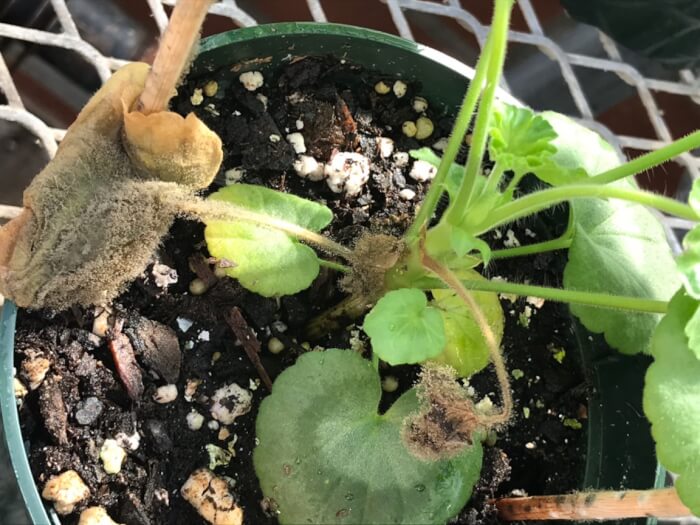 Source: Plantpathology
Source: Plantpathology
Gray mold is a fungal disease that is a serious issue that spreads easily, and it easily kills infected plants.
To reduce this, prune your plants to improve air circulation, and you should limit the use of a fan in the room until the disease is under control. Also, consider adding a houseplant mulch.
#2 Root and Stem Rot
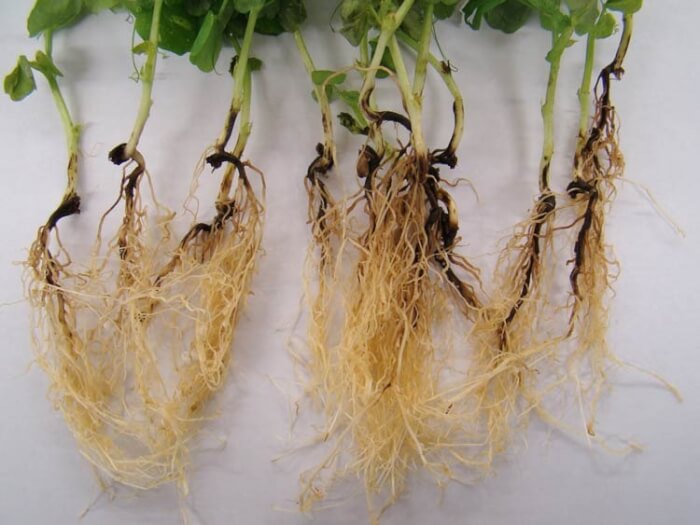 Source: Nicheplantshop
Source: Nicheplantshop
Frequent overwatering and poorly draining soil are major cause that leads to Root and Stem Rot disease, with common manifestations like mushy and black.
Or your plants will wilt from the bottom to the top as foliage and stems turn brown or black. And tossing out the plant is the best way to handle it.
In case you also want to save your plants, remove them from pots and rinse away all of the soil. Wipe the container with a 1:10 bleach and water mixture, dust the roots with copper fungicide powder, then repot with fresh potting soil.
#3 Fungal Leaf Spots
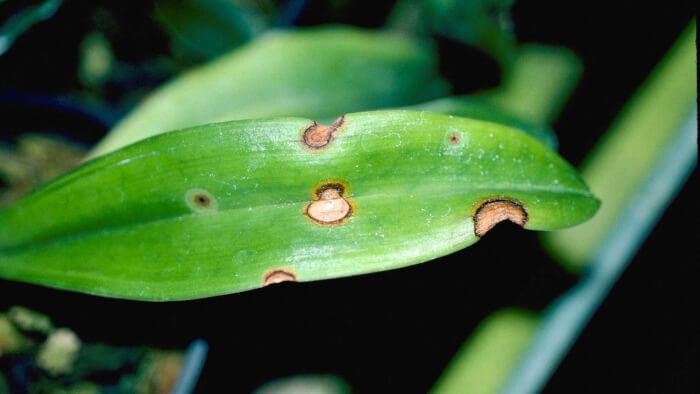 Source: Extensionumdedu
Source: Extensionumdedu
The potting mix is consistently wet, and the foliage remains wet for long periods, which can lead to fungal leaf spot disease.
It shows up on the foliage of your houseplants in different colors, such as brown, black, red, yellow, or tan, and it also causes leaf drop and distortion. To stop the spread of this disease, removing infected leaves and fallen debris is one way.
#4 Southern Blight
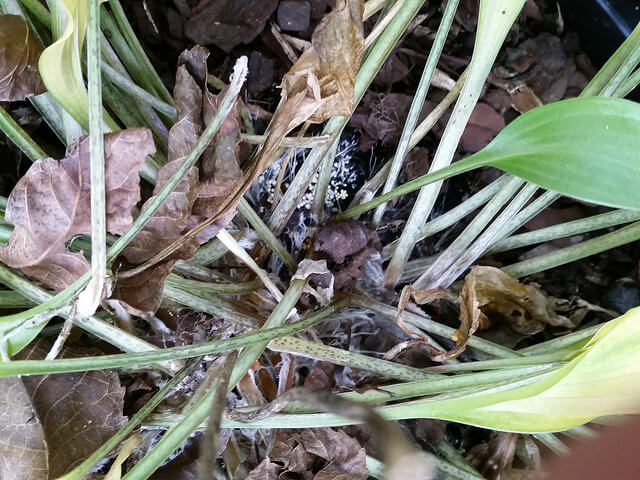 Source: Buncombemastergardener
Source: Buncombemastergardener
Southern Blight causes the rapid loss of the lower leaves on your plant, along with root rot.
To help slow the spread of the disease, removing the affected leaves and discarding them is one way.
#5 Cercospora
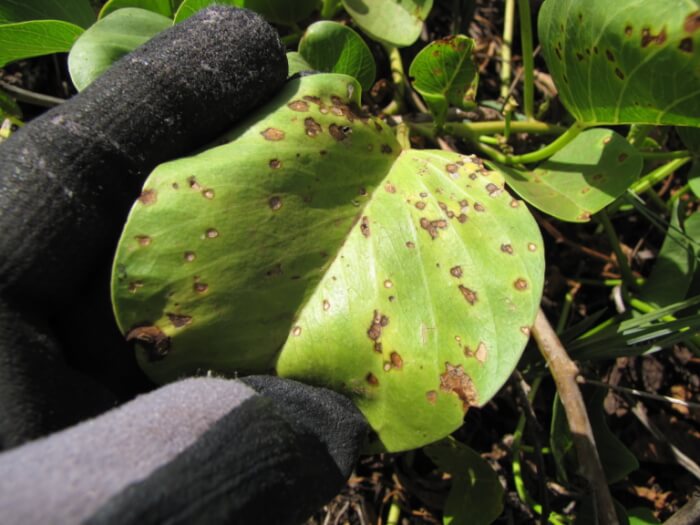 Source: Morningagclips
Source: Morningagclips
Cercospora causes spots on the underside of the leaves on your houseplants that eventually make their way to the top of the plant.
Over time, the yellow spots get larger and become sunken into the leaves with a purplish-brown look. It eventually causes leaf loss with infections close to the node.
To control, trim off any infected leaves or flowers, water at the soil level, not on leaves, and prune your plants to improve air circulation.
In serious cases, remove the plant from its pot and wash away all the soil from the roots, clean the pot with a 1:10 bleach to water mixture, and repot with fresh, clean soil.
#6 White Mold
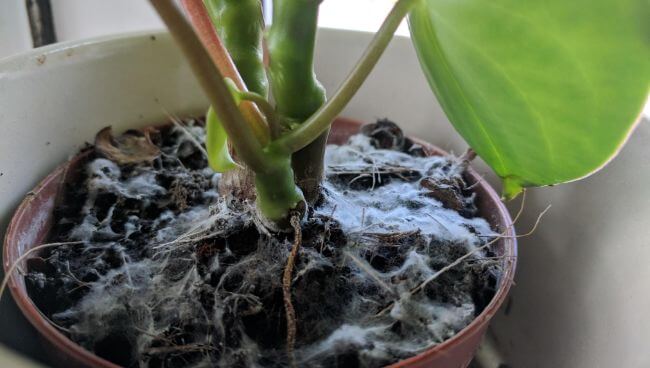 Source: Smartgardenguide
Source: Smartgardenguide
White Mold makes your plant ugly. Remove the white mold off the top of the soil, but you will need to change your growing practices to stop it from coming back.
#7 Bacterial Leaf Spot
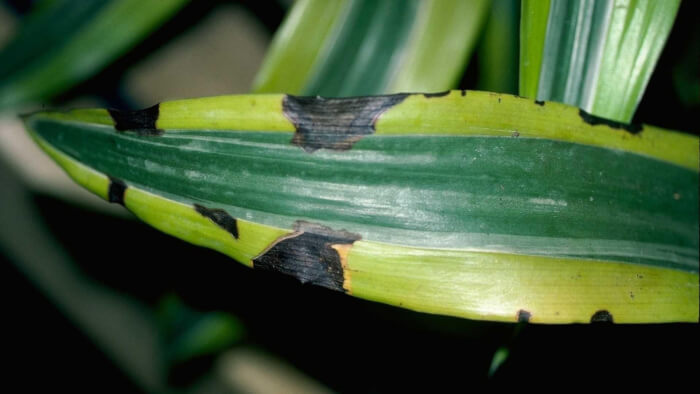 Source: Extensionumdedu
Source: Extensionumdedu
Bacterial Leaf Spot results in the death of plants. Sometimes, bacterial leaf spot is localized and only affects the foliage. Other times, it’s systemic and travels throughout the entire plant.
It also might show up as black, water-soaked lesions that have a yellow pattern around them. To prevent, never water overhead; always water your plants at the base. Add houseplant mulch, prune and stake plants regularly.
#8 Sooty Mold
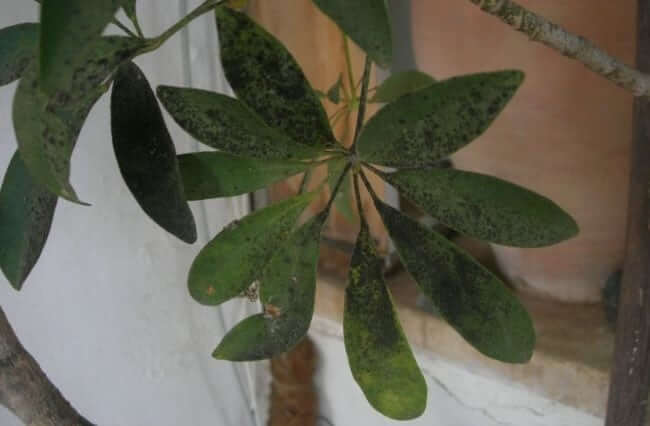 Source: Smartgardenguide
Source: Smartgardenguide
Sooty mold is just an annoying eyesore on your plant. To control, wipe your plants clean with a little dish soap mixed into water.
#9 Anthracnose
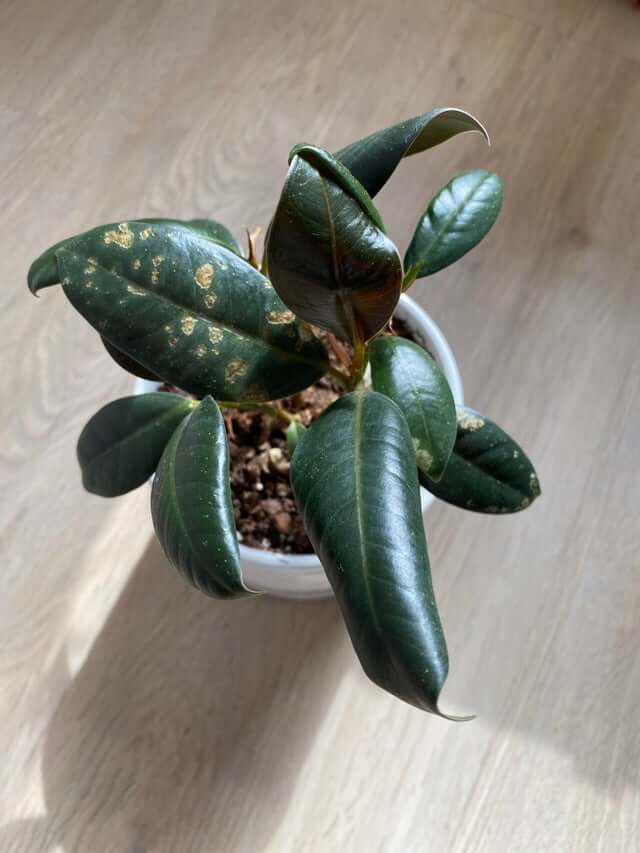 Source: Reddit
Source: Reddit
Anthracnose is a soil-borne fungal disease. The common sign of anthracnose is the leaf tips yellowing.
To prevent, prune your plant frequently, provide proper light, water and fertilizer, proper, spray neem oil regularly, spread mulch under the plants.
#10 Rust
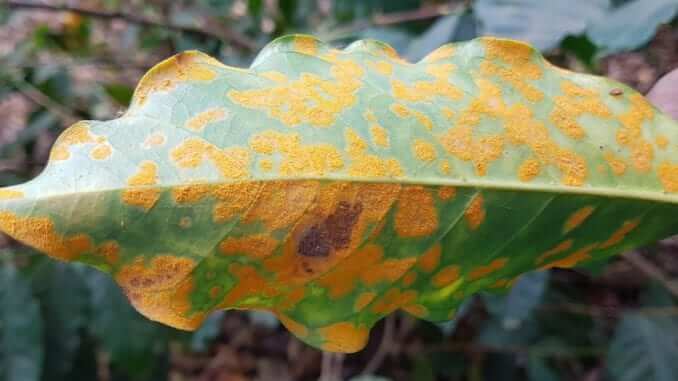 Source: Baristamagazine
Source: Baristamagazine
Rust is a particularly damaging infection. These spots typically start on the underside of the leaves, but advanced stages of rust appear on both sides.
Over time, the leaves fall off the plant prematurely without any yellowing. To prevent, prune appropriately, water plants carefully, and fertilize appropriately.
#11 Powdery Mildew
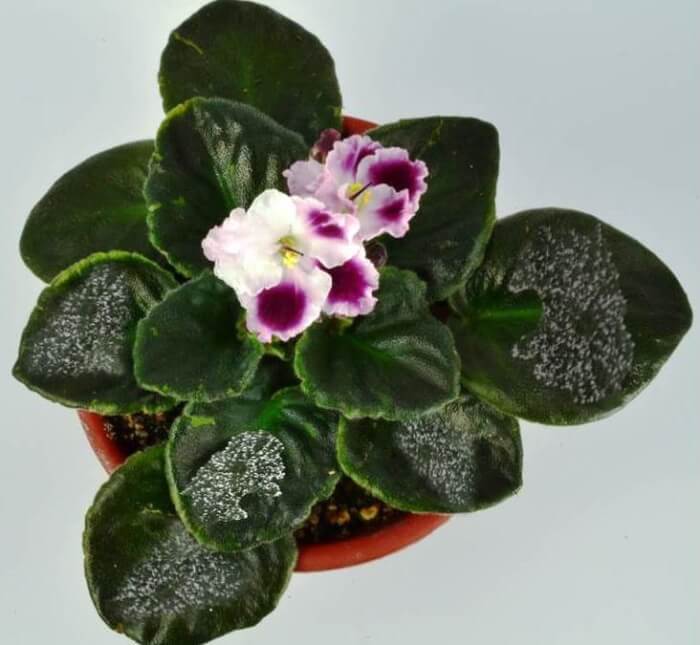 Source: Babyviolets
Source: Babyviolets
Powdery Mildew is one of the most common garden diseases that infects plenty of indoor plants in the winter months, particularly houseplants, when the indoor temperatures are cooler and the humidity is high.
Powdery mildew won’t kill the houseplants, but it’s ugly.
To prevent this disease, water your plants from below instead of overhead, prune to increase airflow, and add houseplant mulching. Spraying a mixture of 40% milk and 60% water is a great way of treating powdery mildew.
